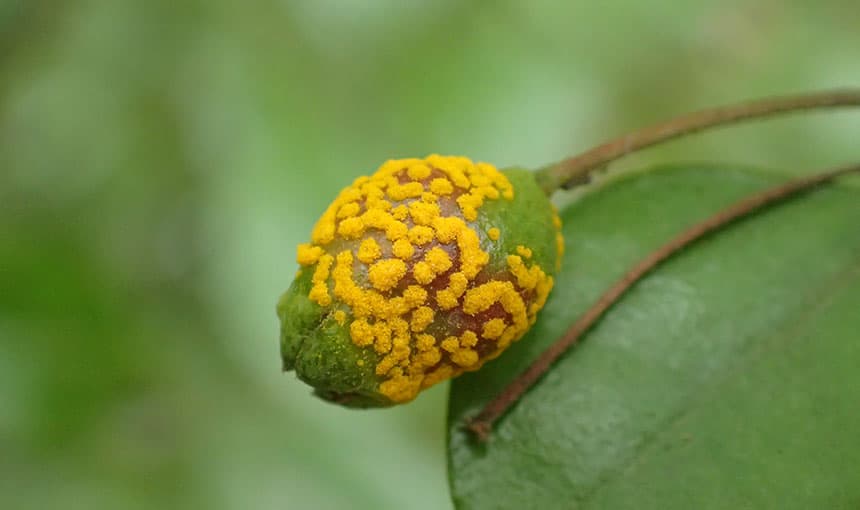The newly formed Science Advisory Panel for the Ministry for the Environment’s Chief Executive has strong links to Biological Heritage, with three of its seven members having connections to the Challenge.
The introduction of Phytophthora agathidicida to Aotearoa
Ngā Rākau Taketake scientists do not support claims that “kauri dieback was not so a recent arrival” and recommend no changes to current kauri dieback management.
Professor Shaun Ogilvie appointed as Kaihautū Ngātahi, Co-Director-Māori
The Biological Heritage National Science Challenge and Manaaki Whenua Landcare Research are very pleased to announce that Professor Shaun Ogilvie has been appointed as the Kaihautū Ngātahi, Co-Director-Māori, for the Challenge. Shaun is taking on this role as part of his appointment as Professor of Ecology and the Environment at the Ngāi Tahu Research Centre, […]
Profile: Dr Beccy Ganley
Hailing from Plant and Food Research, Beccy brings to the team a long history of working in the myrtle rust and kauri dieback research space, making her an excellent candidate for the NRT Science Leader role.
Honeybees observed harvesting myrtle rust
An observation of bees harvesting myrtle rust spores in Auckland has recently been reported – a behaviour which is concerning to scientists.
Host susceptibility trial
Researchers are investigating how well tests for myrtle rust susceptibility done under controlled conditions can predict the impacts of myrtle rust in the field.
The role of gene editing in pest control
The Challenge supported a panel discussion on the role of gene editing for pest control in Aotearoa New Zealand, as a part of the New Zealand International Science Festival, in Ōtepoti Dunedin.
B3 supports emerging coming together of tomorrow’s biosecurity experts
A Biological Heritage PhD student was among those supported by Better Border Biosecurity (B3) to meet other emerging talents and share their work at a recent plant conference.
Unlocking Curious Minds
The Unlocking Curious Minds (UCM) fund will be opening in mid-July, to encourage and enable better engagement with science and technology across all of New Zealand.
Myrtle rust: reports from last season
Beyond Myrtle Rust provide updates on the latest observations of the fungal disease affecting the country’s Myrtaceae plant species thanks to keen New Zealanders out and about recording sightings of disease symptoms.
Better Border Biosecurity (B3) Updates
The recent Better Border Biosecurity (B3) conference was a chance for the community, including New Zealand’s Biological Heritage members, to gather in person for what was likely the first Trans-Tasman conference in New Zealand since the COVID pandemic.
Better Border Biosecurity (B3) Updates
The recent Better Border Biosecurity (B3) conference was a chance for the community, including New Zealand’s Biological Heritage members, to gather in person for what was likely the first Trans-Tasman conference in New Zealand since the COVID pandemic.
Recognising Leadership – Dr Maureen O’Callaghan
Maureen joined the Biological Heritage Challenge in 2016 to lead our largest tranche one research programme – Programme 2: Reducing risks and threats. This research area was complex and required plenty of hands-on leadership and management. Maureen then agreed to take on co-leadership of the strategic investment fund focused on kauri ora and myrtle ora, […]
Fight for the Wild
This beautiful documentary series details the battle our native environment is facing, and what must be done to protect it.
Understanding the genome of myrtle rust
The genome of the fungus which causes the disease myrtle rust, Austropuccinia psidii, has been sequenced – what does this mean for the fight against myrtle rust?
Myrtle rust find reported from Christchurch
A find of myrtle rust on a hedge in residential Christchurch marks the first report of the deadly disease on a host that was not newly planted in the region.














